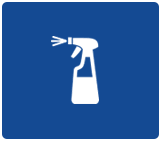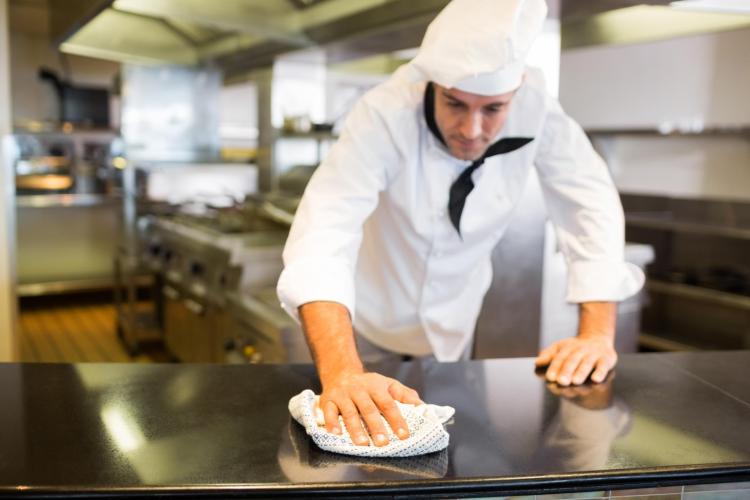Sanitation


Cleaning of the food premises
Cleanliness is an integral part of every successful food business. Clean food facilities and working surfaces reduce the risk of contamination and pest infestations at food premises. All utensils, working surfaces, equipment and floors should be cleaned regularly. Own check plan should contain written cleaning plan and cleaning schedule.
Each cleaning procedure should be performed with correct working order. Firstly, loose debris should be removed from dirty surface. After that the surface should be washed with the help of appropriate detergent and cleaning equipment. After washing the surface can be disinfected. Disinfection will be more efficient after the item has been washed. Washed and disinfected surfaces should be then rinsed in order to remove residuals from washing detergent and disinfectant. The final stage of the cleaning process is drying. Drying is an essential part of every cleaning procedure because it prevents clean surfaces and utensils from contamination.
Cleaning detergents can be categorized according to pH level. Each utensil and surface should be cleaned with appropriate detergent. For example, rusty stains from stainless steel, ceramic and porcelain surfaces should be removed with acidic detergent. Greasy surfaces and utensils should be cleaned with alkaline detergent with pH 8 -11. Ovens and dishwashers should be cleaned with highly alkaline detergents.
It is advisable that colour-coded cleaning equipment is used to prevent cross-contamination of surfaces and equipment. Color-coding helps to ensure that separate cleaning equipment is used for cleaning food contact and non-food contact surfaces. Separate cleaning equipment should be used for customer areas and restaurant kitchens.
Dishwasher cleaning
Before starting dishwasher, it is necessary to check that there are no debries and dirt left after the previous washing cycle. The dosage of detergent and rinse aid should be checked as well. Loose dirt from the dishes should be removed with lukewarm water no hotter than +40 °C. Otherwise, food residues may burn and stick to the dishes. During the wash cycle the best temperature to remove all dirt and kill most microbes is +60 - +65 °C. The rinsing cycle should be performed at +80 - +85 °C. After each use dishwasher should be cleaned, sieve and nozzles removed and cleaned. The door should be left open to ensure that moisture does not stay inside the machine.
Hygiene control samples are obligatory for food premises and must be taken from critical surfaces regularly. Such surfaces may include working surfaces, chopping boards, water taps, door handles and production lines.
Waste
Waste disposal plan is an important part of the own check plan. Waste collection should be arranged so that the waste is separated from the raw materials and food. Sorting of waste should be performed in accordance with local regulations. Waste bins must have lids and must be kept in clean condition and changed regularly. Cleanliness of waste collection areas is crucial to prevent indoor pest infestations and keep outdoor insects, birds and harmful animals away from food premises.
Disinfection
Disinfection does not ensure item’s sterility, but will kill microbes. Sterile means something completely free from living or microorganisms or their spores. When disinfectant is used, manufacturer’s instructions regarding the applicable surface, working solution, time of application and rinsing should be followed. If a surface is repeatedly disinfected, the disinfectant should be regularly changed in order to avoid microbial resistance to it.
Only completely water soluble detergents should be used for cleaning food contact surfaces and utensils. Detergents used for cleaning these surfaces should be developed specifically for this purpose. Never mix different detergents and cleaning solutions bacause this can cause a chemical reaction dangerous for human airways.
